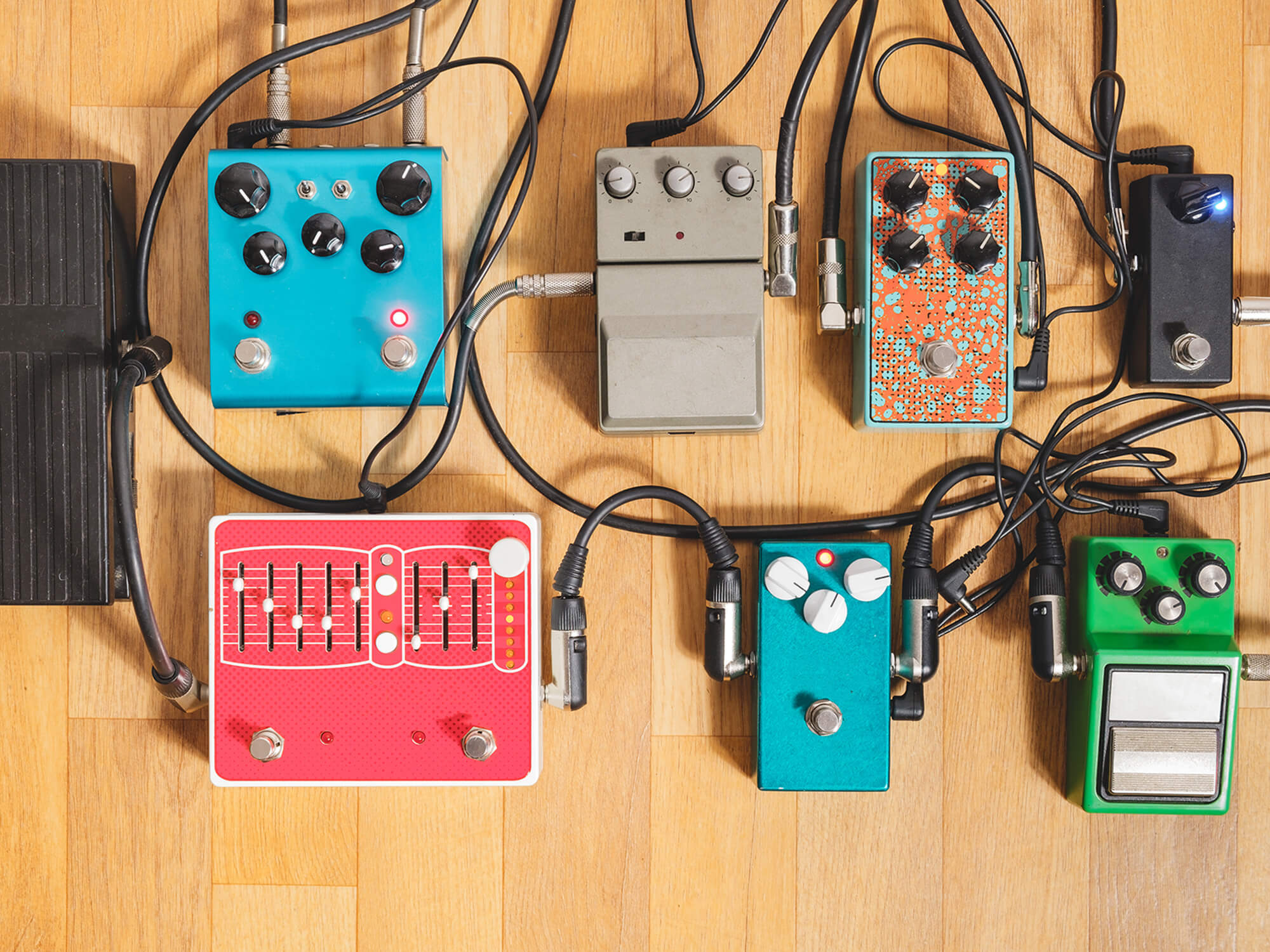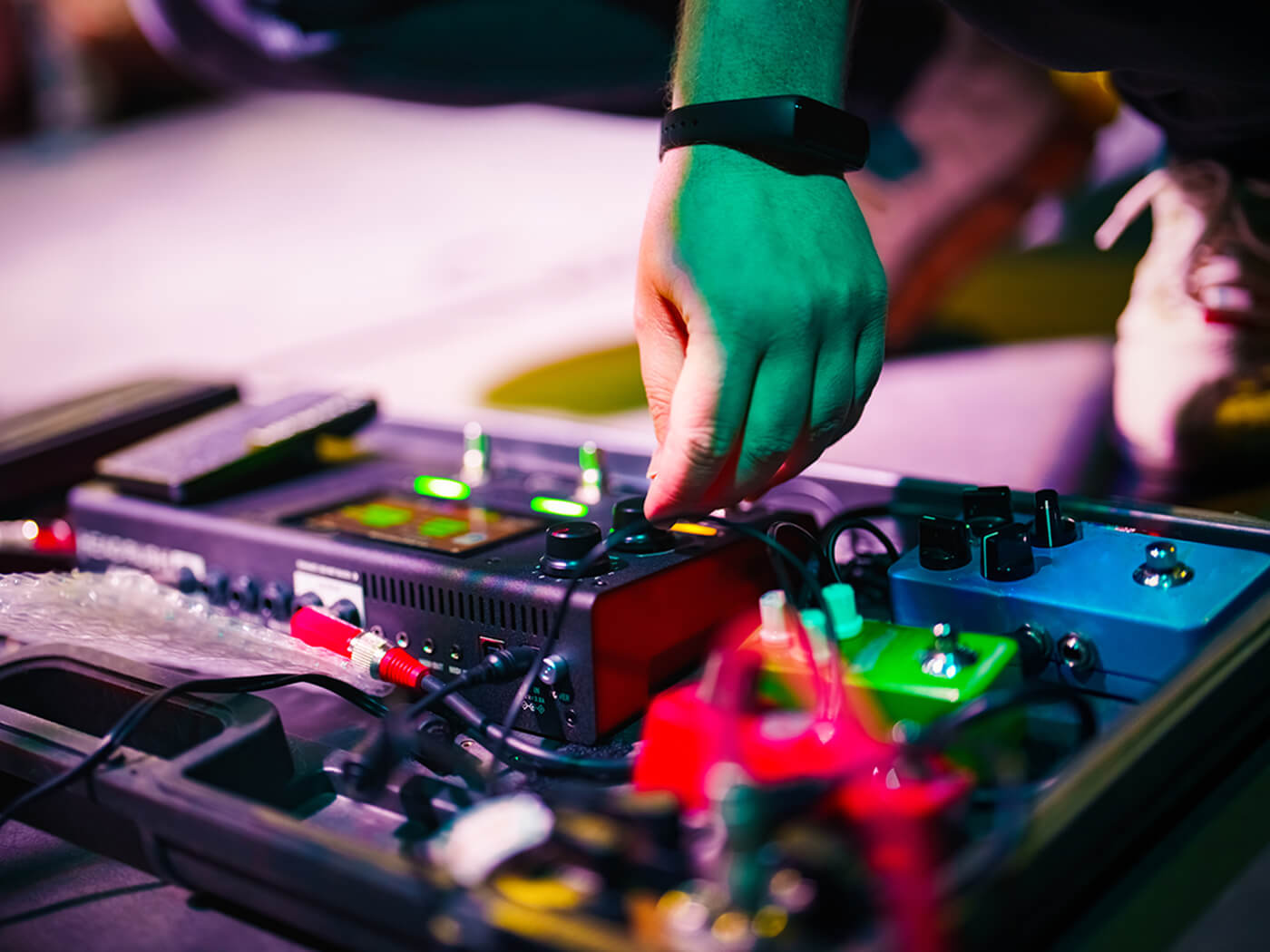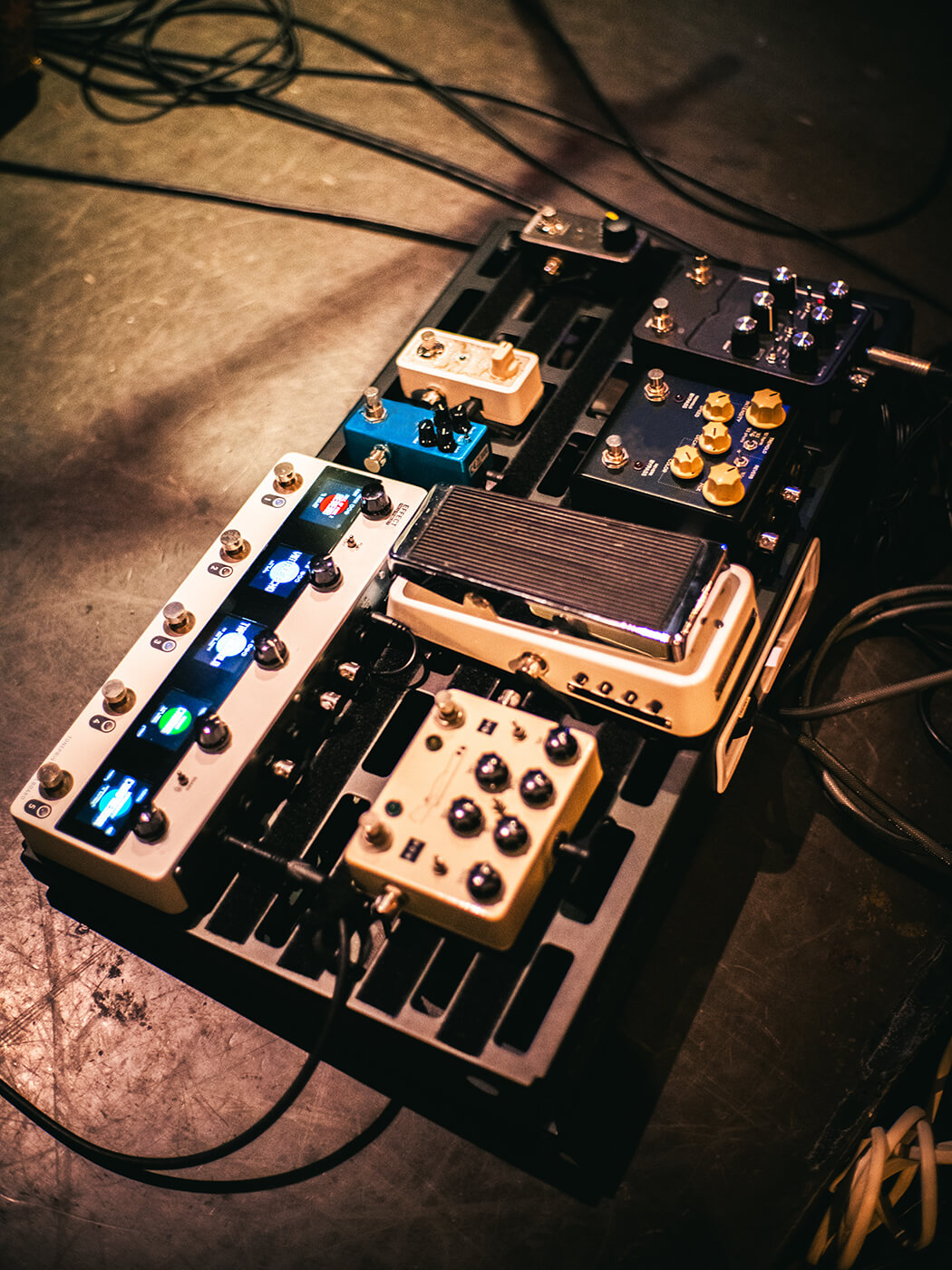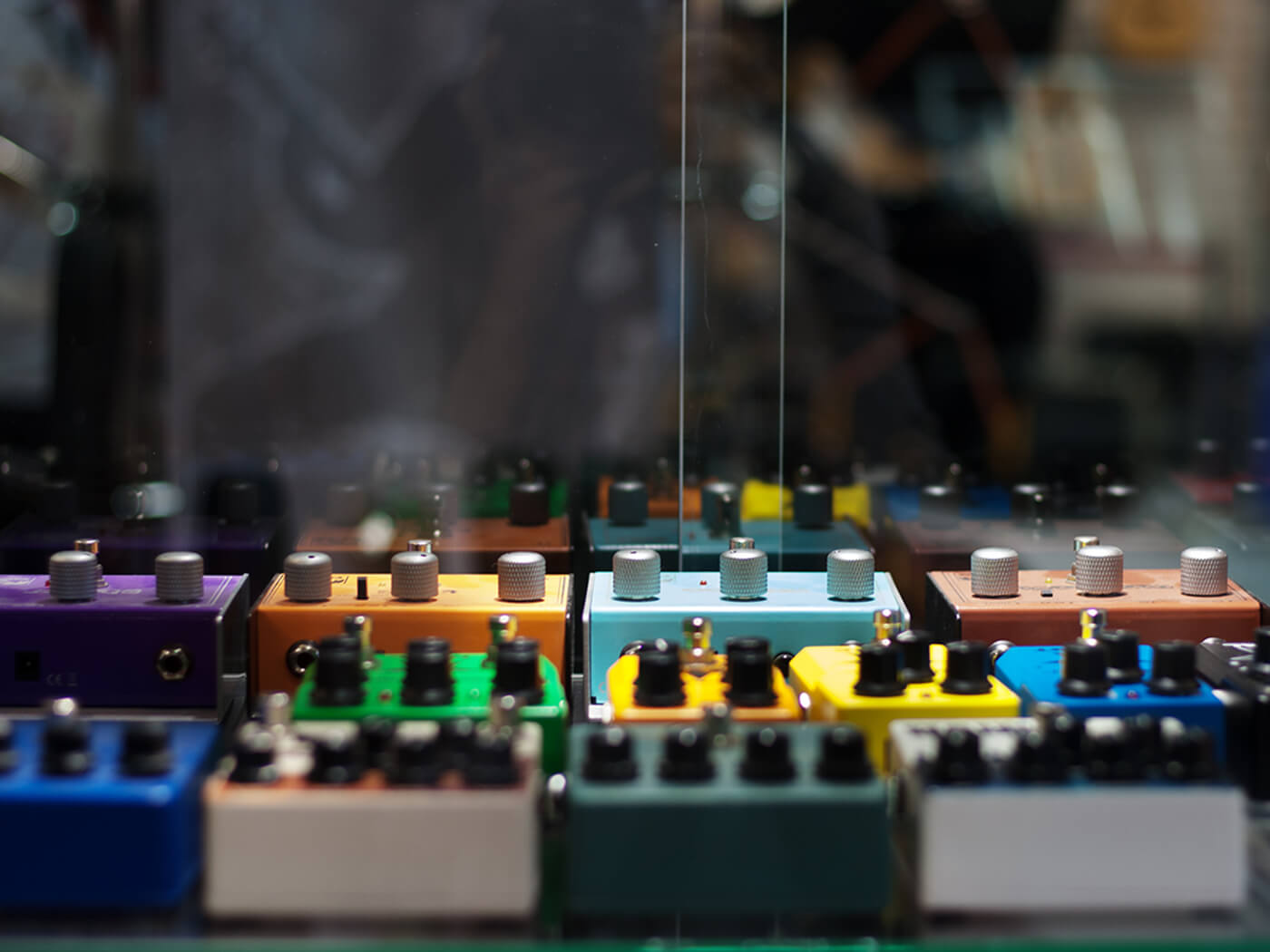Cause & Effects: How to maximise what you can learn about guitar pedals from YouTube video demos
There’s no substitute for playing it yourself, but when that’s not possible, how can we know the important stuff to take from watching video demos online?

Guitar pedals on the floor. Image: Photoboyko/Getty Images
If you were to ask me what the best way to try a guitar pedal is, I’d always answer the same way – you need to try them with your guitar and your amp and if you can’t do that, at the very least take your guitar with you to a guitar shop and try the pedal with a guitar you are intimately familiar with. These two options fall into the category of “the ideal” in terms of auditioning what a guitar pedal can and cannot achieve for your tone.
Like many things in life though, the ideal solution isn’t always the most practicable one. How are you supposed to make an informed buying decision when the pedal in question is only available online, or from thousands of miles away – giving you no chance to actually test the thing out yourself?
The most common solution that has emerged in the last decade or so is that we fire up YouTube, Instagram or Tiktok and look for any relevant videos pertaining to the product in question, and use the information gleaned there to decide whether you want to hit the checkout button.
But how useful are these videos compared to trying the real thing? Well, as both a pedal builder and a pedal obsessive, I’ve spent an awful lot of time watching guitar videos of all sorts and here’s what I’ve learned – hopefully it will be useful for you.

Understanding Your Sources
There are countless guitar-based channels and personalities out there now, but broadly speaking I tend to find it’s useful to split them into categories as that helps me determine what kind of information can usefully be taken from each one. My personal categories are as follows:
- Individual reviewers/enthusiast channels
- Music Stores and retailers
- Pedal manufacturers
- Comparison channels
- Genre-specific channels (including those with a vintage-specific interest)
- Guides, tips and tutorial channels
All of these can probably be broken down further but for the purpose of this, I’d like to focus on a few of these options as detailed and how to use them.
What are you hoping to achieve?
First thing to ask is, what are you hoping to achieve? A decision based upon watching others use the pedal and the conclusions they draw? A better understanding of how a pedal works? A better understanding of how it sounds? In all cases I am going to assume you are looking to buy a pedal because otherwise it’s just watching for entertainment, and that has slightly different metrics for success.

Manufacturers’ channels
Manufacturers are a great place to start, as they likely have lots of content to cover a multitude of use cases for the pedal in question. This will be content created with the sole aim of demonstrating what the pedal can achieve and how it sounds over as wide a range of scenarios as possible.
The caveat is that all this content will be created to make the pedal sound its best, and it’s important to realise that as you may not be able to achieve the same results instantly with your rig. If a demo is done on a rig close to what you have then that would be the one to focus on, but don’t necessarily get hung up on accuracy – a lot of information about a pedal can be conveyed no matter what rig is used.
Stores and retailers
Retailers provide a useful resource precisely because they’re trying to sell you a thing. While some of the same caveats as the manufacturers apply, often the desire these retailers have to sell you something actually removes some of the bias or favouritism you might see in other videos.
For example, if a store is doing a straight comparison video of several similar pedals at similar price points, they know it’s extremely unlikely that a viewer is going to buy all the pedals featured. That means there’s not much to be gained from doing anything other than giving a straightforward and honest appraisal of each pedal’s features and sounds.
This also gives you the ability to see pedals in a ‘like for like’ context, which can really help when trying to narrow down your options, and reveal the pedal’s qualities versus the competition. It’s especially interesting if you already own one of the pedals featured but are looking for a similar but different alternative, as you can use that as a gauge of how it’ll sound in your rig.

The tips and tutorial channels
For me, these channels are the best for an understanding of context – how to get the best from a pedal and how the pedal interacts with others. This is the main way I absorb guitar pedal information prior to having them in my hands. It feels like a video capture of that exploration you make as a pedal nut, opening the box, plugging it in, then wiring it into your pedalboard and all the trials and tribulations involved with that.
I find watching these videos often shortens the time between first plug in and getting tones I know I will love – often I use recommended settings from these shows as a good baseline to build upon. In fact, when customers ask about our pedals, I can often steer them to some of these channels, as often they feature some of the best tones anyone’s got from my pedals.
What do you need to be aware of?
With all this in mind please be aware of the limitations of YouTube and the device you consume this media on. Firstly, the videos recorded are compressed to meet YouTube requirements, this means that the audio may not be as high fidelity as when recorded. If you know this going in, you can adjust your expectations accordingly.
I will say again though that all the YouTube research in the world isn’t a substitute for plugging something in yourself. If you can, get in a room with your prospective purchase and find out how it responds to your gear and your playing style – it’s a rewarding and cathartic exercise in tone-hunting!




